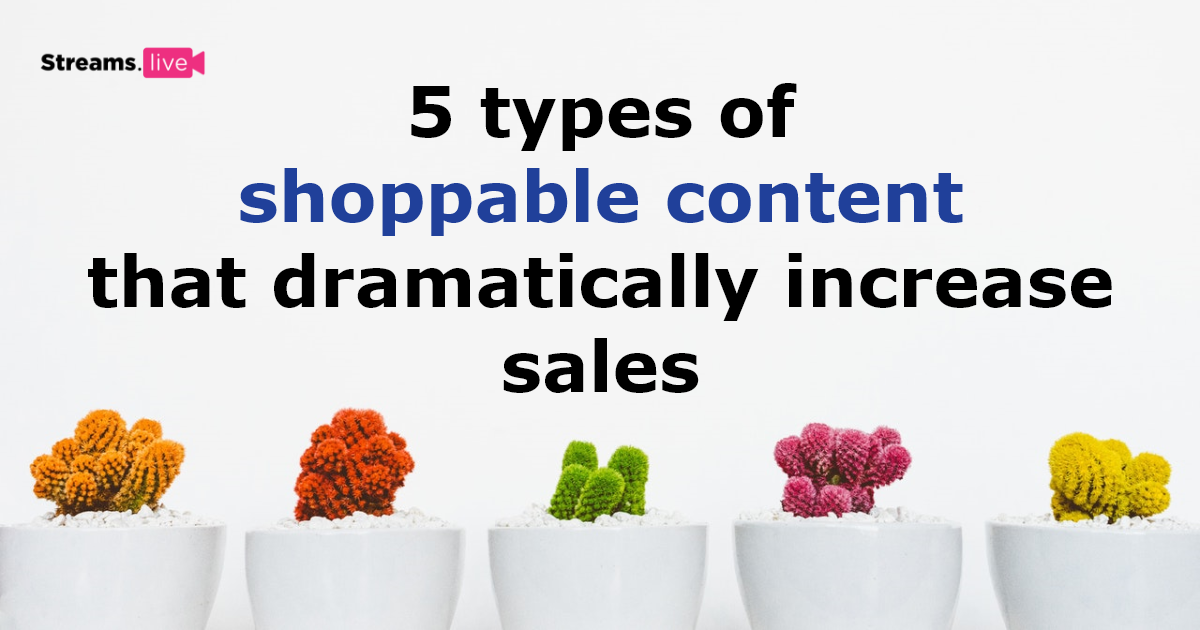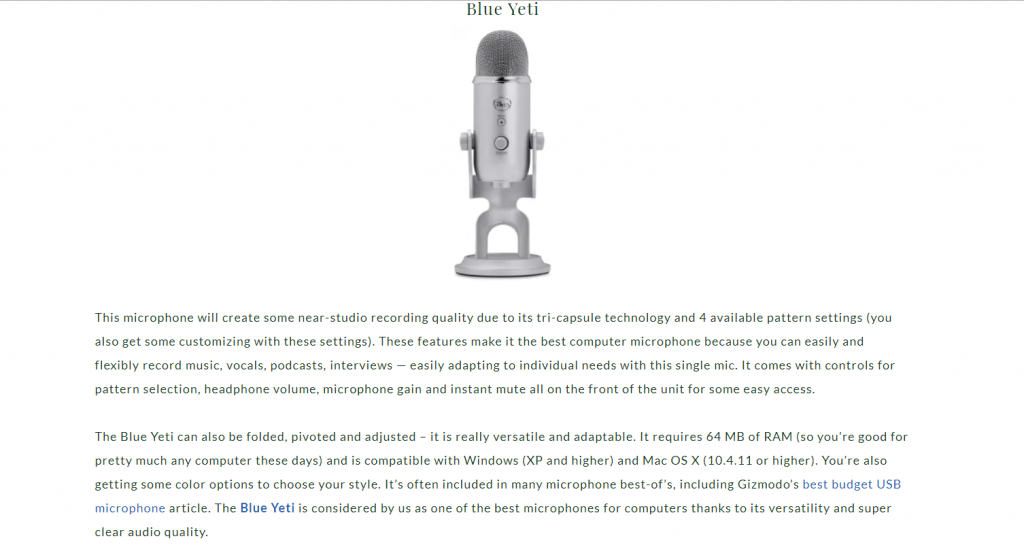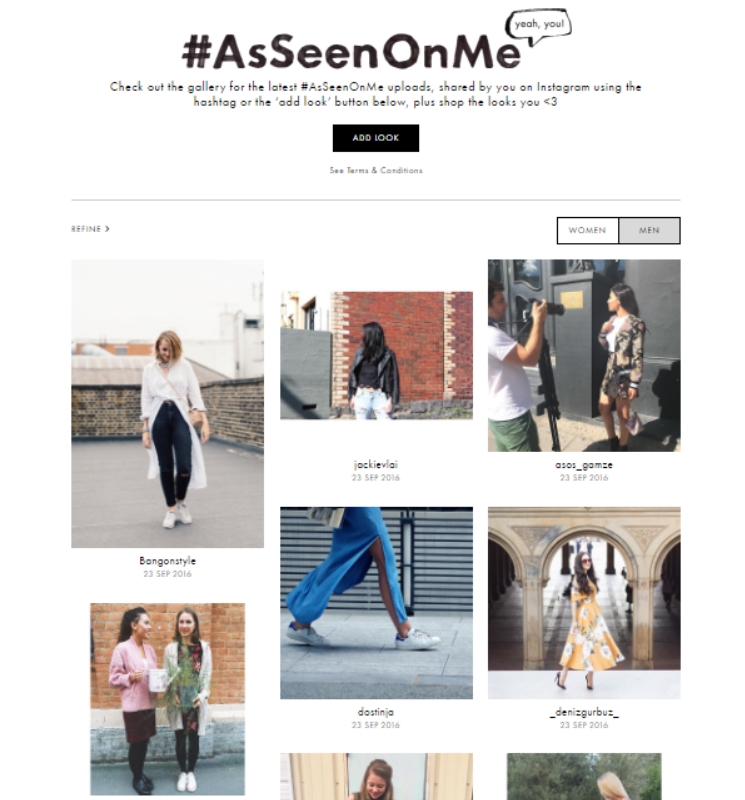
What is shoppable content?
Shoppable content is any type of content that provides direct purchase. Using a link or a button embedded into the content, clients can purchase products or goods straight from your content.
The need for having shoppable content is not new, but it grew as most companies adopted content-centric marketing strategies. Content marketing is the technique that focuses on creating and distributing valuable content meant to educate, attract, and convert qualified leads. As more options become available for customers, companies need not only to find a way to capture a client’s attention but also to position themselves as experts in their fields.
Following the rise of the internet, it became easier for companies to share their knowledge with potential and existing customers. Having a well-established sales funnel allowed companies to structure their marketing campaigns and deliver different content for clients finding themselves in different stages of the buying process. But things do not always stick to plan. While part of the audience will go through each step of your sales funnel, others will follow their path. And here is where making your content shoppable will truly make a difference.
Although your content marketing strategy is designed and crafted to educate your potential customers and to assist them throughout the whole process, sometimes people are ready to buy earlier than anticipated. Are your sales funnels optimized for them to easily close the deal at the desired moment?
Having shoppable content means prospects are one click away from converting. This allows you to take advantage of the momentum, without pressuring your clients to take action.
Here are 5 of the most common types of shoppable content:
- Text
- Audio
- Pictures
- Magazines
- Video
Using text as shoppable content
Text is the most “uncomplicated” form of shoppable content we can easily find over the internet. And it became available years before the “shoppable content” trend stormed the internet. The first blogs were started in the mid-90s, and as the technology evolved, the content shifted from technical information to broader subjects. In approximately the same year as the first blog was created, the first online transaction took place. Sting’s “Ten Summoner’s Tales” album is recorded as the object of the first online purchase, leading the road for a new shopping behavior that will change the world. And although it took a little longer for the two new technological innovations to be linked, we can easily see that shoppable content in the form of text was here more than 20 years ago.
Nowadays, shoppable content in the form of text is present on the majority of blogs and articles. Links inserted in the article redirect clients on a product page or in a shopping cart, allowing them the purchase goods while reading articles over the internet. The article itself educates the readers, while the shoppable link allows them to buy the related product without having to further look for that it online.

source: micreviews.com
Using Audio as shoppable content
When talking about shoppable audio content we almost immediately think of podcasts. However, we should not forget that radio aired more than 100 years ago and become commercial in the mid-20s (last century). Although the content was not directly shoppable at the time it was only because the technology did not allow listeners to directly buy from that experience. However, it’s safe to say that audio content is encouraging people to buy products for more than 100 years. The difference is that now we can do it with a single click. Or voice command.
Going back to online audio content, it’s expected that by 2024 there will be over 160 million monthly unique listeners in the US alone. And considering that all over the world podcasts have seen an ascendant trend, it was only normal for marketers to use it in their marketing and sales strategies. It’s also used as the main shopping channel by artists trying to promote their work.
But don’t forget the people have a unique connection with their beloved music and content creators. You don’t want to be remembered as the brand that keeps interrupting their audio experience. Maybe even more than when using other shoppable content formats, your audio needs to feel like a natural add-on to the experience. Use data to deliver the right content to the right audience.
A great example to follow is Estee Lauder’s Spotify campaign, where customers could easily order a sample of its new serum while listening to curated content.
Using shoppable pictures to drive sales
Of course, pictures could miss from this list. As the pandemic changed our shopping behavior and moved shopping decisions almost entirely online, it was expected for pictures to become an even more powerful sales driver. And when it comes to products, pictures do speak a thousand words.
Over the last year or so, we encountered many great shopping experiences that started with visual content. Part of this trend is based on Instagram’s efforts to transform the platform into an eCommerce social media environment. We have spoken about this in a previous article that can be found here.
Creating shoppable content with pictures allows customers to shop for your products as they discover them online. This allows retailers to display entire outfits that can be purchased with a single click of a button.
A great example of using shoppable pictures was the #asseenonme campaign initiated by the British online fashion retailer Asos. Customers were encouraged to share their outfits over Facebook and Instagram, together with the specified tag. The content was afterward curated and distributed through a visual commerce page, while product links were added to the images. Viewers interested in a specific outfit were able to easily access the product pages related to those outfits. Although the campaign has been dropped from the website, the UGC is still available over social media platforms. This demonstrating that shoppable content has a purpose beyond a specific shopping campaign.

source: Asos.com
eCommerce through digital magazines
Not so common, and definitely worth considering, shoppable magazines charm customers by offering exceptional experiences.
Historically, magazines and product catalogs have been important sales drives. They found their place on every executive’s desk across America and while catalogs presented comprehensive lists of products and services, magazines incorporated coupons and samples amongst curated content. We could even consider that the first eCommerce platforms started by digitalizing sales catalogs.
While printed magazines still have their share of readers, the digitalization of media allowed magazines to create new experiences. Digital versions of magazines not only engage readers through quality, curated content but also allow them to interact with multiple forms of shoppable content.
A great example of how magazines are still valuable is offered by Net-a-Porter. The brand offers two different experiences through magazines. While Porter is a monthly printed magazine that is shipped to its readers, The Edit is a weekly magazine that features shoppable content. The 30-page publication activates its products with a simple hoover. Although you need to have an account to order its products, the digital experience is appealing.

Shoppable video as the eCommerce disrupter
Last, but not least, let’s take a look at what is the most efficient form of shoppable content: shoppable video. As a company focusing on supporting our partners to deliver the ultimate shopping experience through live video, this subject is of course closer to our hearts. We’ve also had the chance to be part of some incredible shopping experiences put together by our partners. But what makes video different from other shoppable content formats?
People like video format for multiple reasons. It engages more senses, helps us better understand, and keeps us focused.

Video also has the momentum advantage: when going live, our partners can interact with their viewers, creating a two-way communication experience for the viewers. They can engage with the host and with other viewers, can ask questions, and get their answers within seconds. Thus having an experience where momentum becomes an important sales driver. With a single click of a button, customers will land on your product page without actually leaving the video experience.
Final words
Although we have presented the most common 5 types of shoppable content, modern-day technology allows us to find new ways of engaging our viewers. Or to combine two or more of the above into our marketing and sales campaigns. Each content format should be tried: not only because different people prefer different content formats, but because we consume different content formats in different contexts. While driving, you can catch my attention through audio, and audio-only. On a late Thursday evening, I will be interested in reading your blog post. But on Saturday morning, please approach me with an engaging live video.





